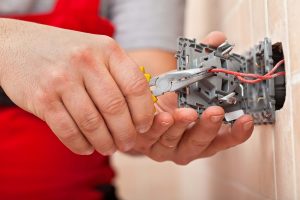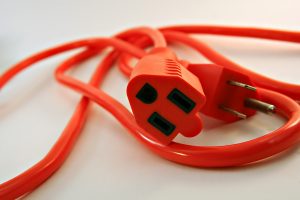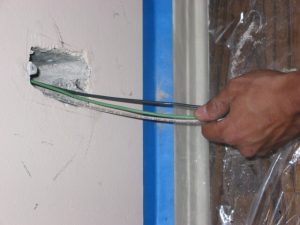 For your home wiring system, there is such a thing as pre-wiring or wiring for the future. This simply means applying pre-wiring tips that may become vital in the future for adding categories like audio, video, home security, network & Wifi, cable, satellite, and internet.
For your home wiring system, there is such a thing as pre-wiring or wiring for the future. This simply means applying pre-wiring tips that may become vital in the future for adding categories like audio, video, home security, network & Wifi, cable, satellite, and internet.
In many cases, homeowners who install home wiring themselves or the technicians they hire neglect pre-wiring for the future and this can cause difficulty later on. Pre-wiring is important to do the heavy lifting in your home whenever you need it.
Here are some tips on how to hire a house for the future. If you won’t be carrying out the project, these tips let you know what to look out for with your electrical contractor.
- Cover any exposed wiring
In wiring a house, most professional technicians aim to make the system smooth and neat. If you are lucky enough to have this professional approach, that’s great. But with or without this, you can take an extra step to cover any exposed wiring in your home wiring system. Wrap the wiring in plastic bags and hold them firm with a tape. This protects your wiring as other contractors work around the home.
- Use low voltage boxes when you can
Although high voltage boxes seem more popular, low voltage boxes are ideal for installing volume controls or when you need to run HDMI cables. They are a more convenient option and suitable for AV wall plates. You should install them where possible.
- Install a speaker wire
Good sound is a thing of excitement for homeowners. Audio or speaker systems can be installed in the future easily and affordably by running 4-conductor speaker wire. A 4-conductor wire differs from a 2-conductor wire as it has four separate wires that give you room for up to two speakers. Besides running this wire for whole-house speaker systems, you can keep volume controls in mind too.
- Have backup
For modern home theaters, HDMI is the standard connection often used. However, some not so pleasant experiences can show you that it’s always best to have a backup. An HDMI house wiring for the future can come up with issues like not working and that just defeats the whole aim of pre-wiring. The solution is to run two CAT6 cables along with the HDMI cables as a backup for future use.
- Install conduits
Cable conduits are not the same as electrical conduits and they often come in handy for running speaker wires, network cables, and cable wires. Install conduits during construction and terminate them into junction boxes. Cover them with faceplates and that’s the end of that until they are needed.
How about going wireless?
There’s nothing wrong with a plan to go wireless in the future. While this is great, wired connections are often faster and suitable for high-traffic applications. To ensure you can enjoy the speed of wired connections and use of applications like Ultra HD use wired connections such as CAT6 or Category 5e for your future proof home wiring.





 House rewiring is a tough project. It is disruptive and demanding of funds and electrical experience. The answer to if you need an electrician for a house rewire is yes.
House rewiring is a tough project. It is disruptive and demanding of funds and electrical experience. The answer to if you need an electrician for a house rewire is yes. A 220-volt outlet is the most powerful outlet in the home. It is built for power-demanding appliances, like ovens, dryers, and more. You can identify 220-volt outlets as outlets that are larger and different-looking than others. They usually have either 3 prong or 4 prong holes.
A 220-volt outlet is the most powerful outlet in the home. It is built for power-demanding appliances, like ovens, dryers, and more. You can identify 220-volt outlets as outlets that are larger and different-looking than others. They usually have either 3 prong or 4 prong holes. Deciding to
Deciding to  Getting power within the home is easy. You are already set up with outlets, cables, and extension cords. So, all you have to do when you need to put on the TV, use the microwave, or other appliance is plug in and switch on. However, when you need power outside, it’s different. Running power outside depends on a few factors starting from what you need power for, or rather the duration of use.
Getting power within the home is easy. You are already set up with outlets, cables, and extension cords. So, all you have to do when you need to put on the TV, use the microwave, or other appliance is plug in and switch on. However, when you need power outside, it’s different. Running power outside depends on a few factors starting from what you need power for, or rather the duration of use. If you are planning to purchase an old home or you are already living in one, then chances are you may have seen
If you are planning to purchase an old home or you are already living in one, then chances are you may have seen  Wiring a home under construction or during a remodeling project is easy, mostly because the walls are accessible. The real difficulty comes when you are trying to pull a new wire through a wall – an already existing wall.
Wiring a home under construction or during a remodeling project is easy, mostly because the walls are accessible. The real difficulty comes when you are trying to pull a new wire through a wall – an already existing wall. Electricity has been with us for decades. The industry continues to make new discoveries and update on former methods and as a homeowner, it might seem tasking to keep up. The good news is with every innovation comes safer, more efficient, and convenient electrical systems. You get to enjoy all the benefits still.
Electricity has been with us for decades. The industry continues to make new discoveries and update on former methods and as a homeowner, it might seem tasking to keep up. The good news is with every innovation comes safer, more efficient, and convenient electrical systems. You get to enjoy all the benefits still. The crazy amounts of money most families spend on their monthly electric bills is a problem most households are wondering how to counter. From air conditioners to water heaters almost every equipment in our homes today use electricity. Because of this, the secret to making your electric bills affordable is through ensuring the appliances in your home are not overusing the power.
The crazy amounts of money most families spend on their monthly electric bills is a problem most households are wondering how to counter. From air conditioners to water heaters almost every equipment in our homes today use electricity. Because of this, the secret to making your electric bills affordable is through ensuring the appliances in your home are not overusing the power.